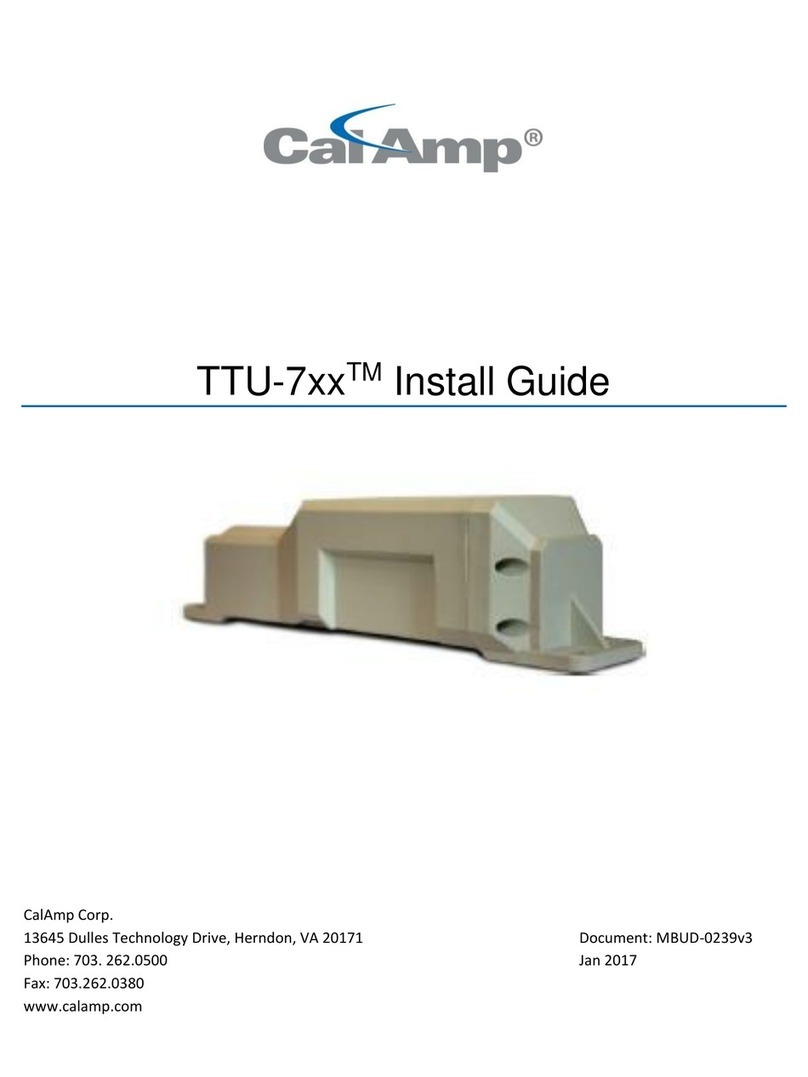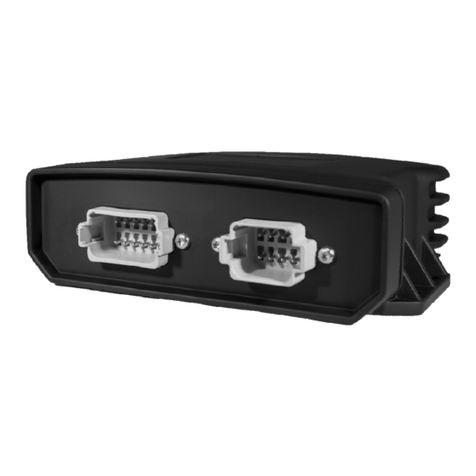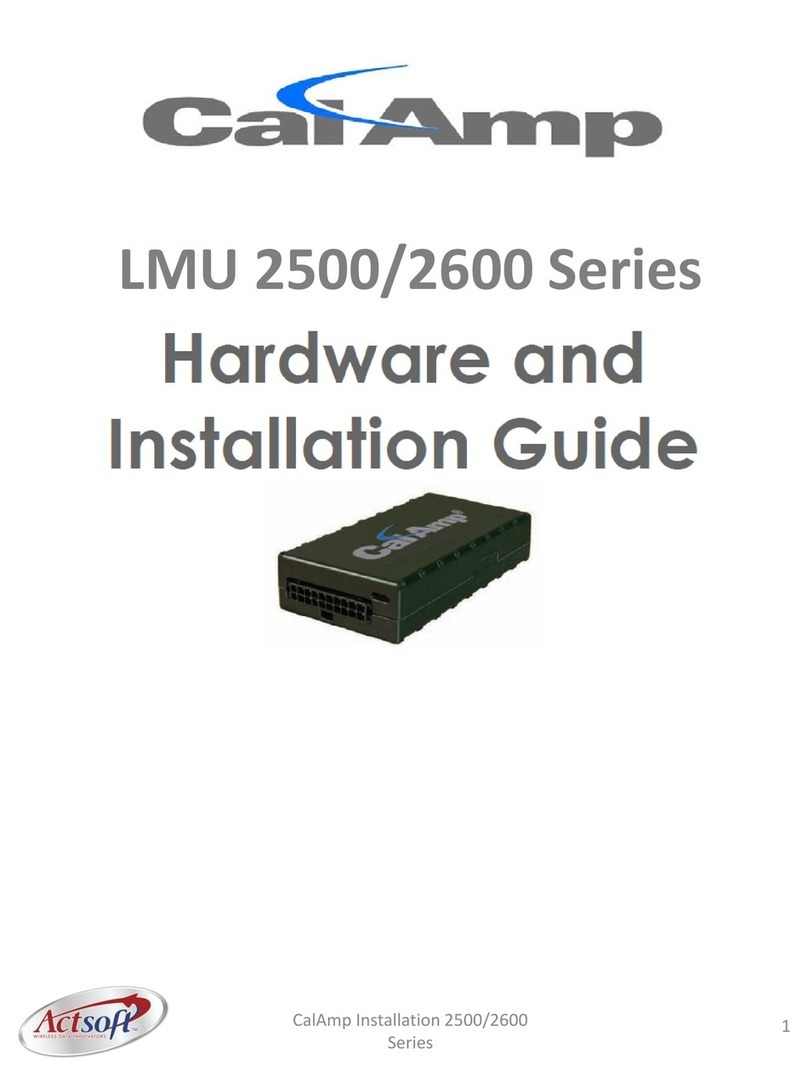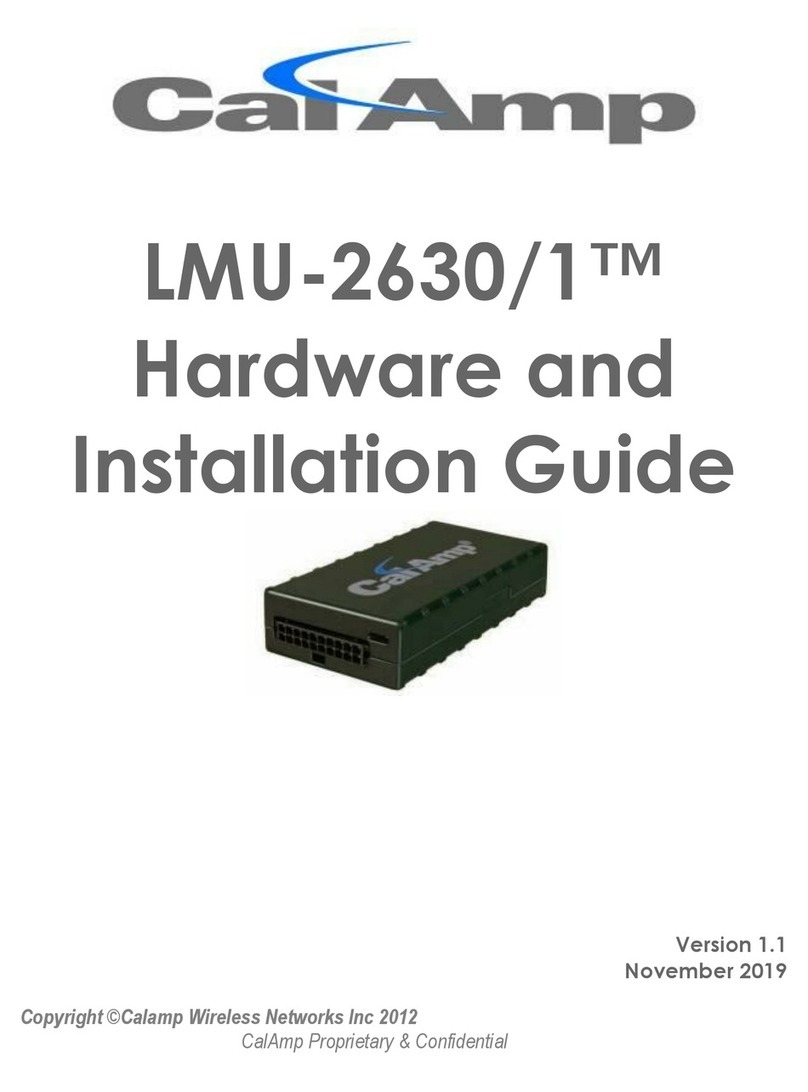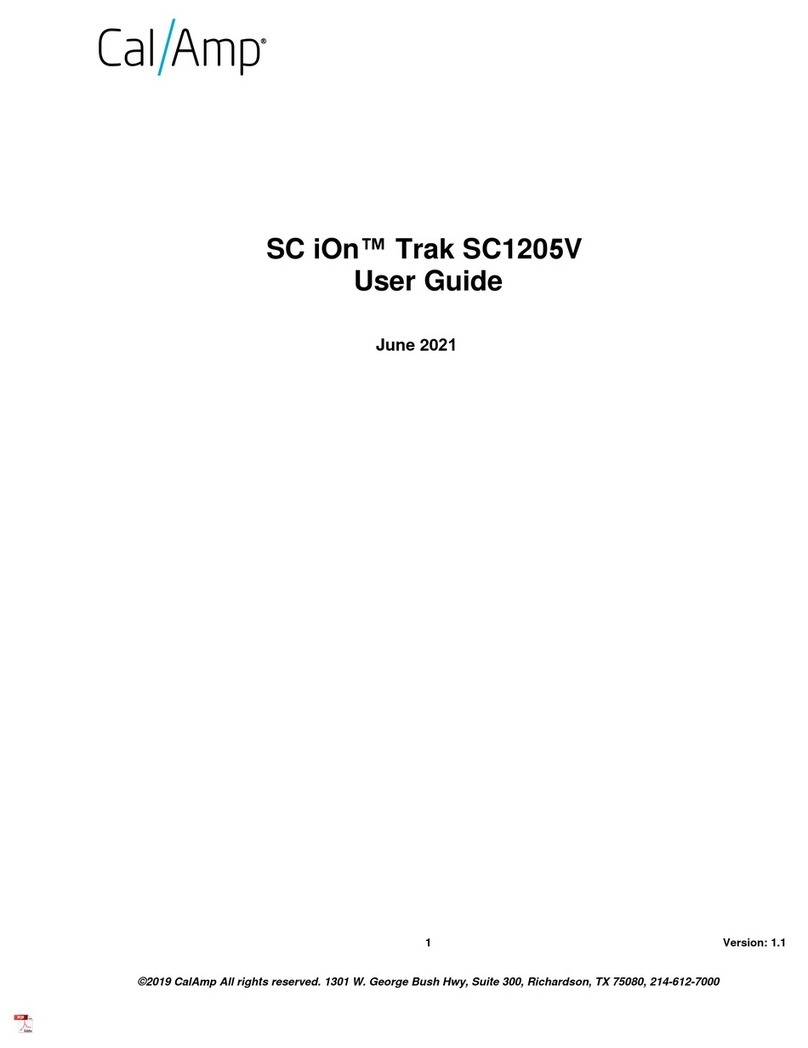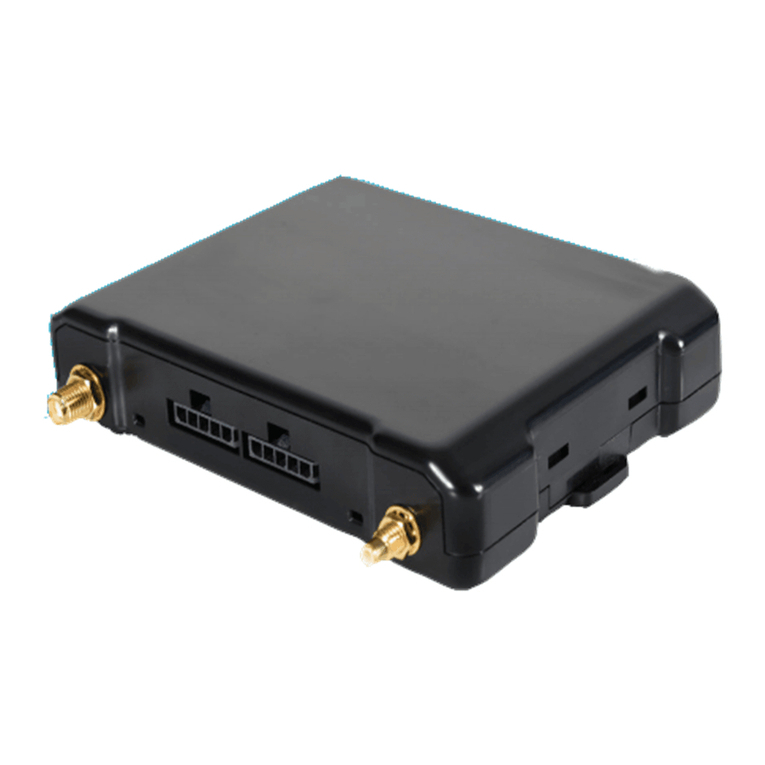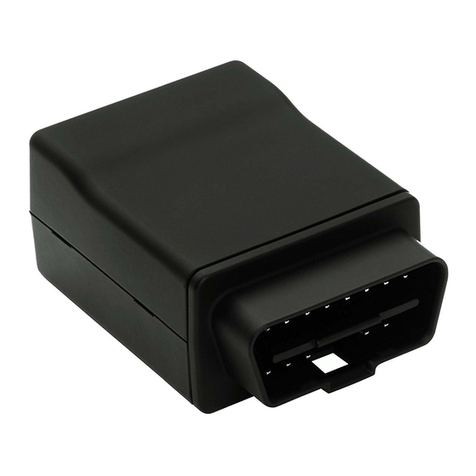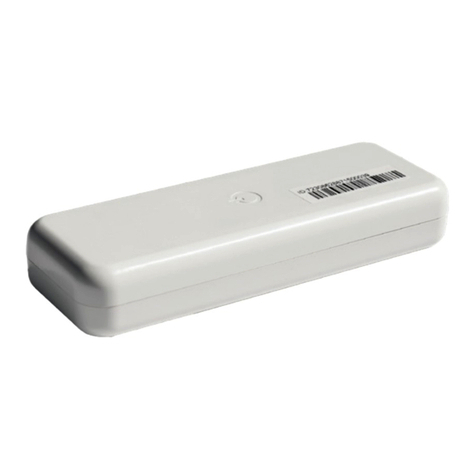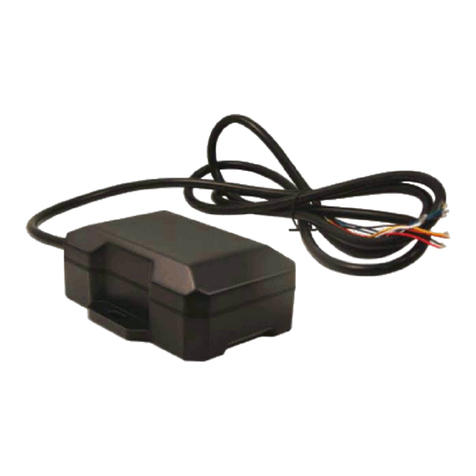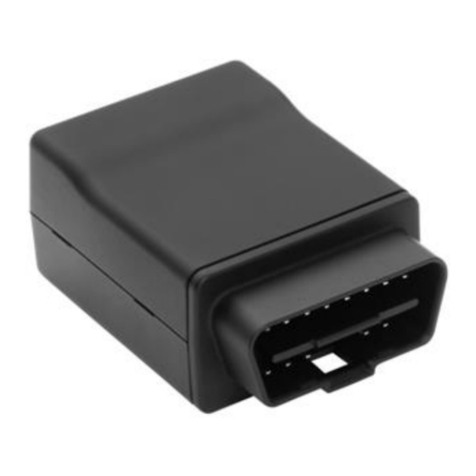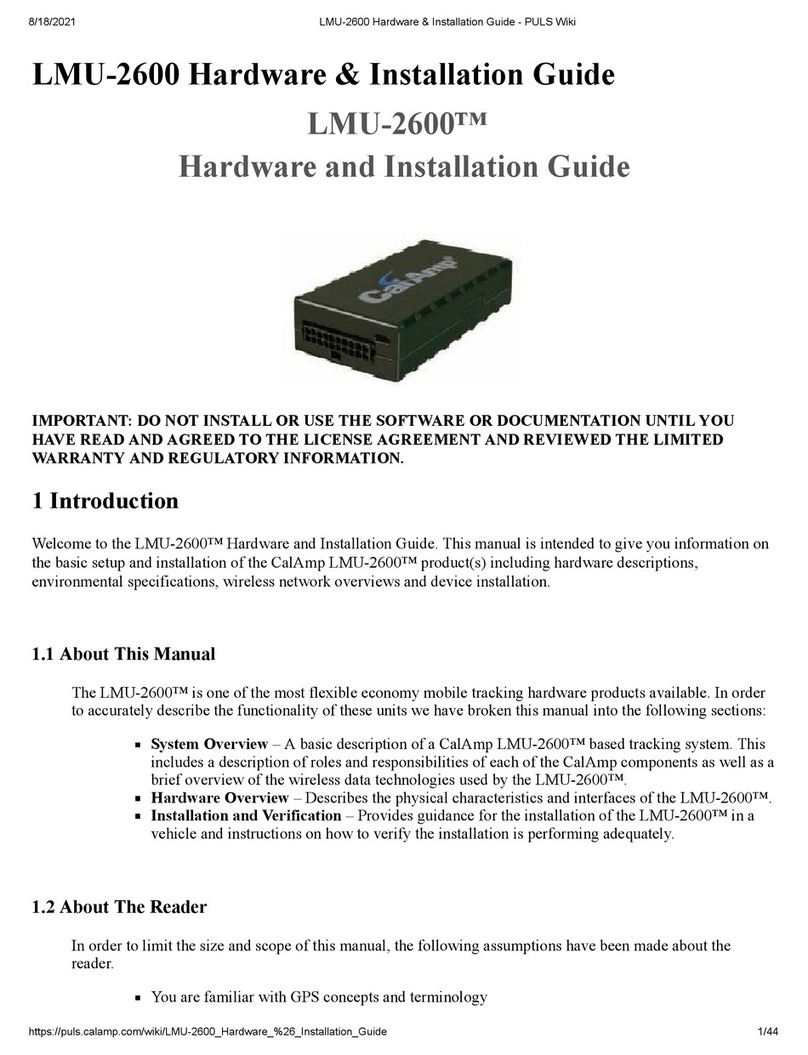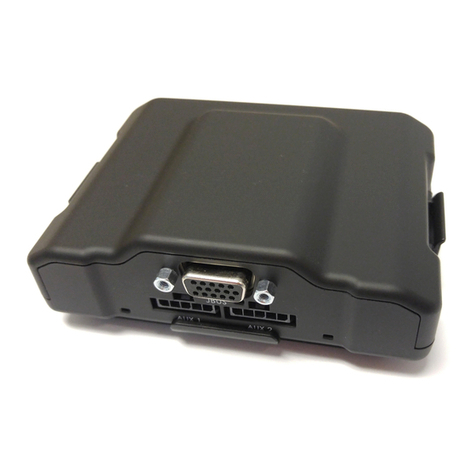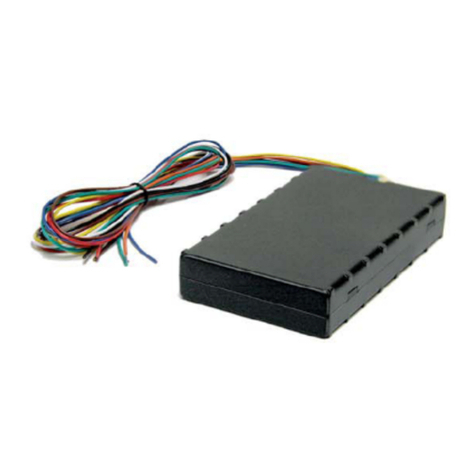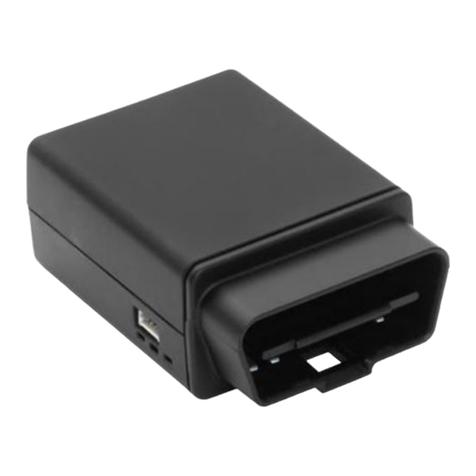infrastructure and process control applications. For additional information, please visit the Company’s
website at www.calamp.com.
1.4 About the CalAmp Trailer Tracking Unit-TTU-4530™
The CalAmp Trailer Tracking Unit-4530™ (TTU-4530™) is a mobile device that resides in private,
commercial or government vehicles. The TTU-4530™ is a single box enclosure incorporating a
processor, a GPS receiver, a wireless data modem, and a vehicle-rated power supply. The TTU-
4530™ also supports inputs and outputs to monitor and react to the vehicular environment and/or
driver actions.
Flexibility
The TTU-4530™ features CalAmp's industry leading advanced on-board alert engine that monitors
vehicle conditions giving you the most flexible tracking device in its class. The PEG™ (Programmable
Event Generator) application supports hundreds of customized exception-based rules to help meet
customers' dynamic requirements. Customers can modify the behavior of the device to meet with a
range of applications preprogrammed before shipment or in the field. Combining affordability and
device intelligence with your unique application can give you distinct advantages over your
competition.
Over-the-Air Serviceability
The TTU-4530™ also incorporates CalAmp's industry leading over-the-air device management and
maintenance system software, PULS™ (Programming, Updates, and Logistics System). Configuration
parameters, PEG rules, and firmware can all be updated over the air. Our web-based maintenance
server, PULS™ scripts, and firmware, can all be updated over-the-air. PULS™ offers out-of-the-box
hands free configuration and automatic post-installation upgrades. You can also monitor unit health
status across your customers' fleets to quickly identify issues before they become expensive problems.
2 System Overview
2.1 Overview
The entire purpose behind a fleet management system is to be able to remotely contact a vehicle,
determine its location or status, and do something meaningful with that information. This could include
displaying the vehicle location on a map, performing an address look-up, providing real-time driving
directions, updating the vehicles ETA, monitoring vehicle and driver status or dispatching the vehicle to
its next pick up.
